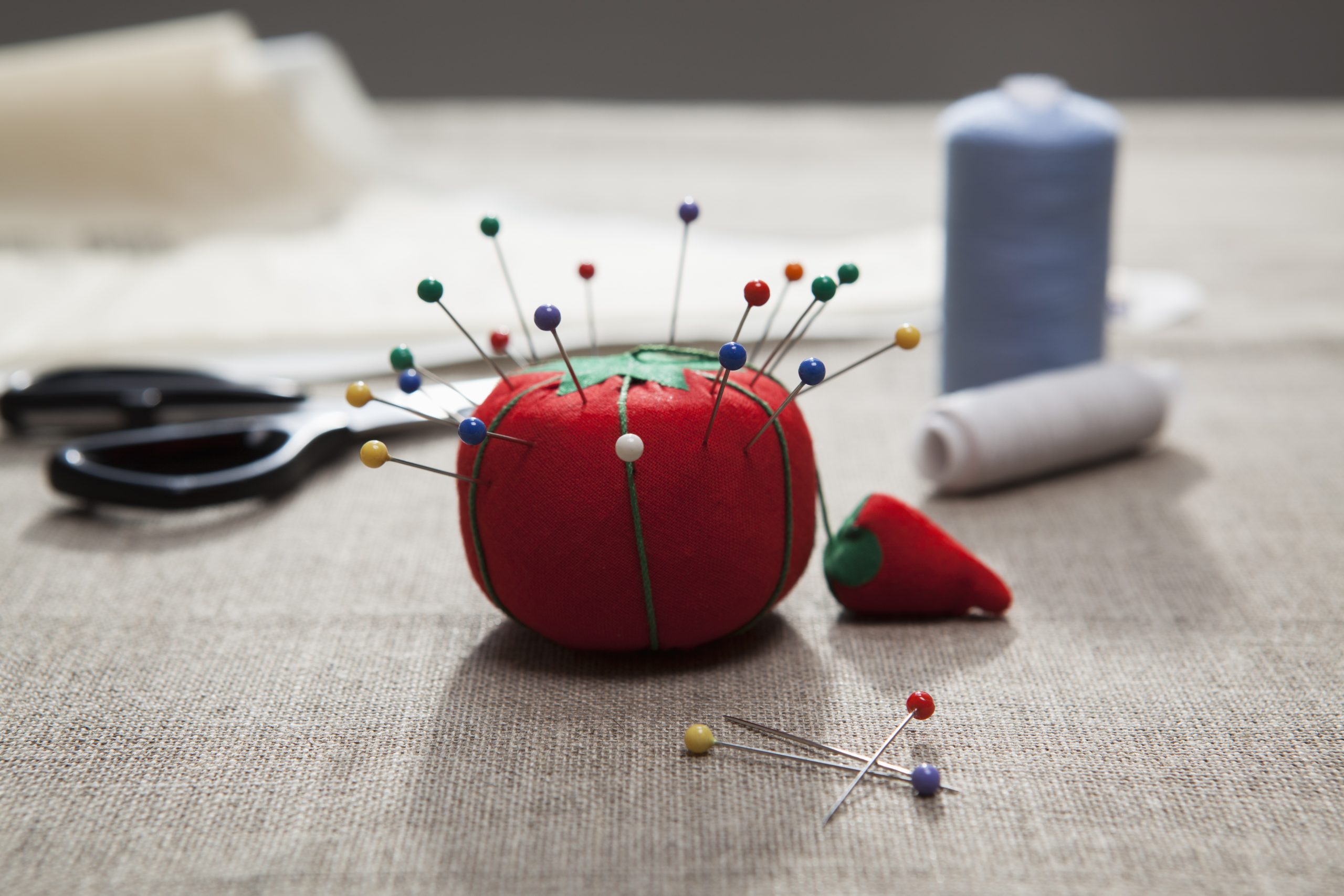
Any sewist will tell you pins are a must-have sewing tool. You can count on these tough little guys to help with so many tasks, from holding the pattern to the fabric, to keeping materials together while you stitch. But pins work best when you use the right kind for the job and fabric at hand. So long as you have these types of sewing pins nearby, you should always be prepared.
1. Glass Head Pins

These are one of the most widely used pins among sewers. Made out of nickel-plated steel, they’re strong but not overly flexible. (Pins with softer metal shafts can be bendy, making it that much harder to pin back up through fabric layers.) The 1⅜” length is the perfect size, too. If it were longer it would be too bendy, and if it were shorter it would have trouble pinning through thick layers of wool or other heavyweight garment materials.
The extra-fine 0.5 mm metal shaft also means it’ll only leave teeny-tiny holes in the fabric, and the glass head won’t melt under the heat of the iron. Translation: use these pins when you need to hold materials down during pressing.
There are a lot of glass head pins on the market, so don’t be afraid to shop around. Just keep in mind that thin pins are best for lightweight fabrics, whereas heavy pins are better for thicker materials.
2. Ball-Point Pins

When sewing with stretch knits or jersey fabrics, you know to use a ball-point needle in your sewing machine, as the slightly rounded point can slide between the threads without breaking them. (Since all the threads are held together in continuous loops, breaking any can lead to major unraveling.) That same idea holds true for ball-point pins.
These pins also have nickel-plated 0.5 mm metal shafts, so they’re just as strong and rigid as glass head versions. But they have plastic rather than glass heads, so it’s best to skip them when pressing — or at least be very aware of where the heads are so you don’t accidentally melt them.
You can buy ball-point pins in a variety of lengths and thicknesses, so judge the weight of your project against the weight of the pins.
3. Silk Pins
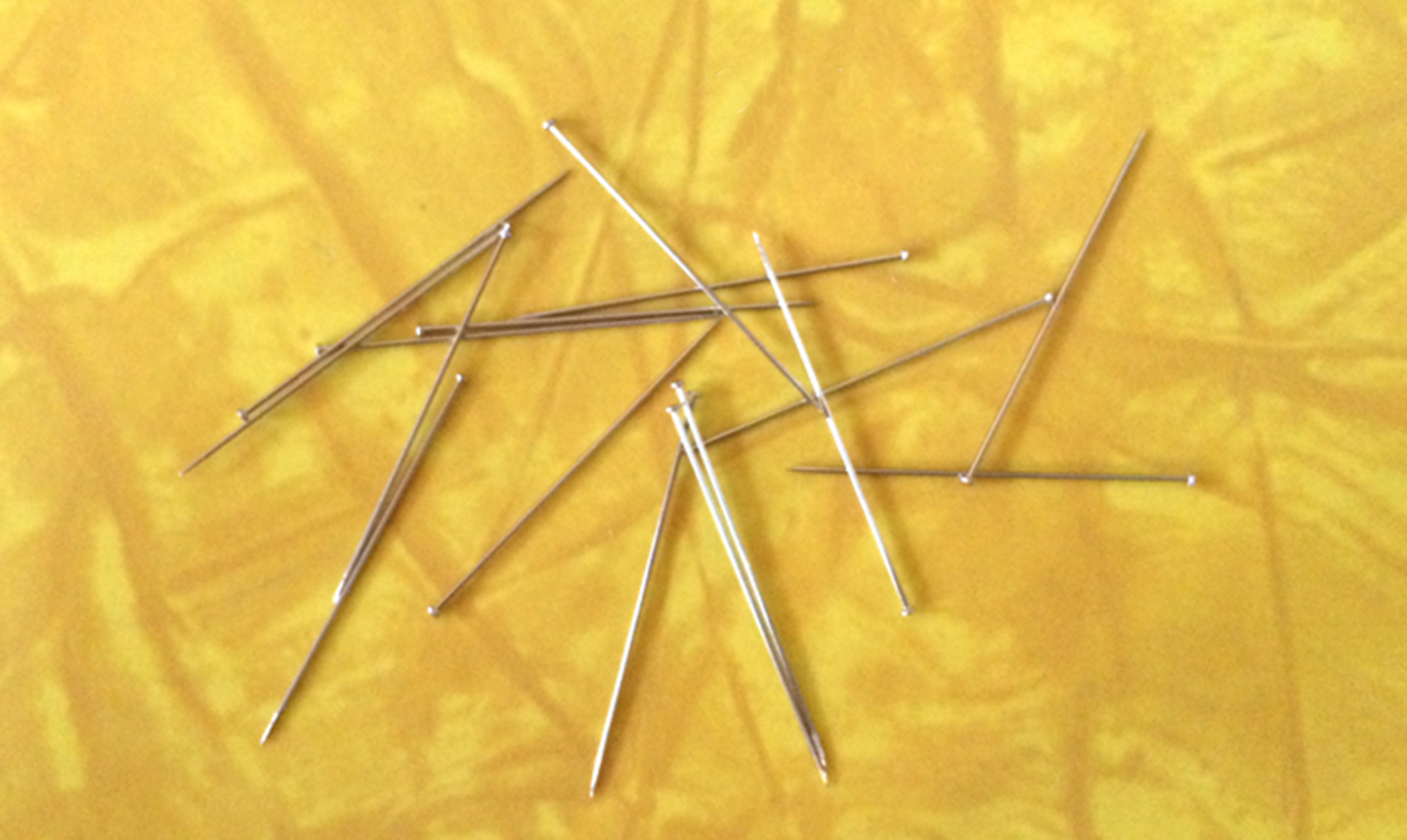
Some fabrics are self-repairing, meaning the fibers of the weave spread apart to accommodate the pin, then bounce back to where they were once you remove it. Silk is not one of those fabrics, thanks to the delicacy of the threads, which is why you need these extra-fine pins if you want to work with the material.
Classic silk pins are all metal, with no glass or plastic balls. (Sometimes these are called dressmaking pins or satin pins, both of which have their own slight variations.) They come in a range of weights, so like all other pins, you want to match the shaft thickness to your silk.
Pro Tip: always test your pin on scraps to see how the fabric recovers, and keep pins within your seam allowance to help avoid unwanted holes.
4. Quilting Pins
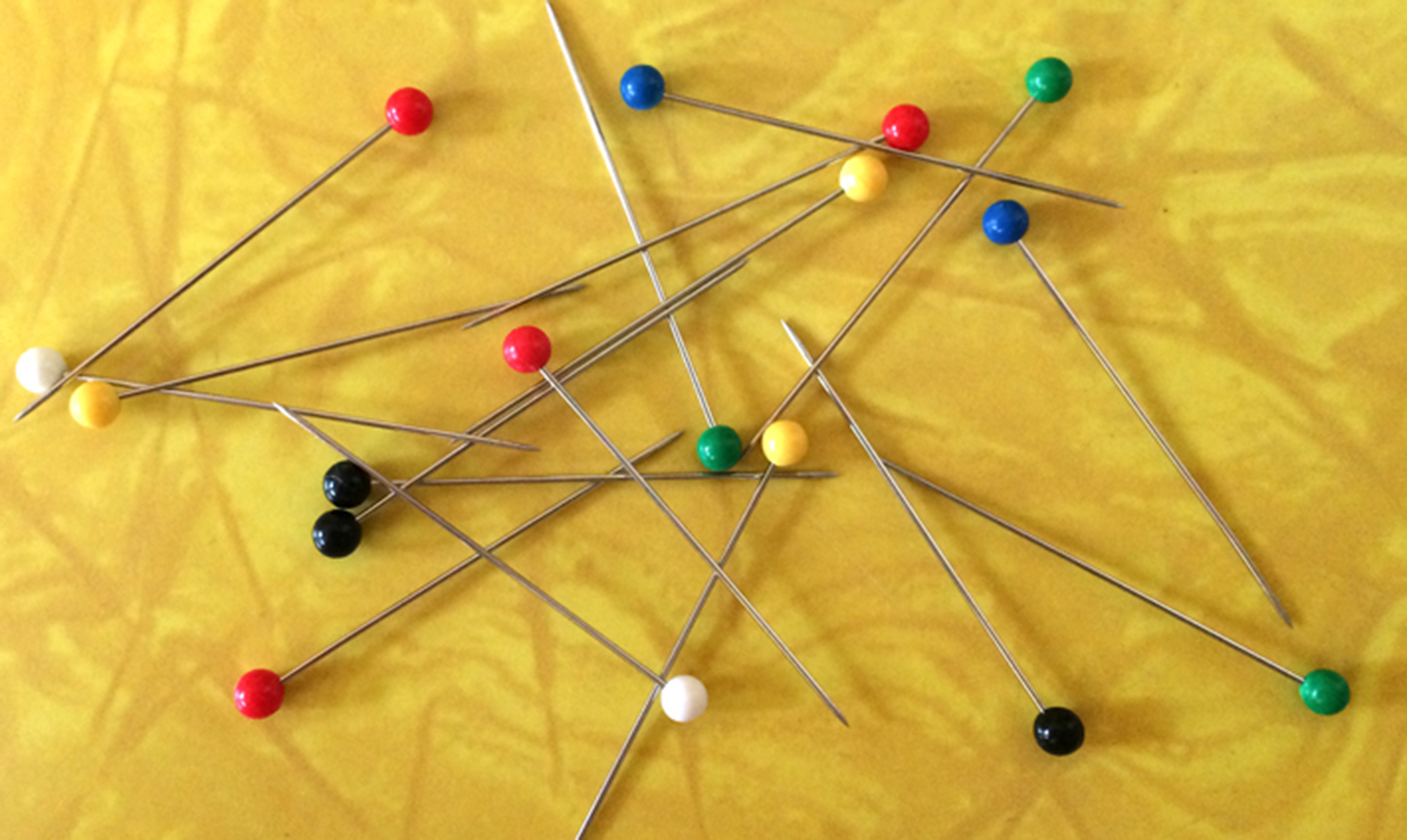
Because quilting involves many layers of fabric and batting, you want pins that are stronger and longer so they can work through all the layers of a quilt. Ones that have brightly-colored heads (usually yellow or multi-colored) make them easy to spot wherever they are in your project.
Traditionally, quilting pins have plastic ball heads, but melting isn’t usually a concern — most ironing happens before and after pinning. And because quilts are usually made with a sturdy cotton, your fabric should be able to handle the heavier weight of these pins. (That said, if you choose to use a thinner or less traditional fabric for your quilt, consider a different pin choice to match.)
5. Plastic Head Pins
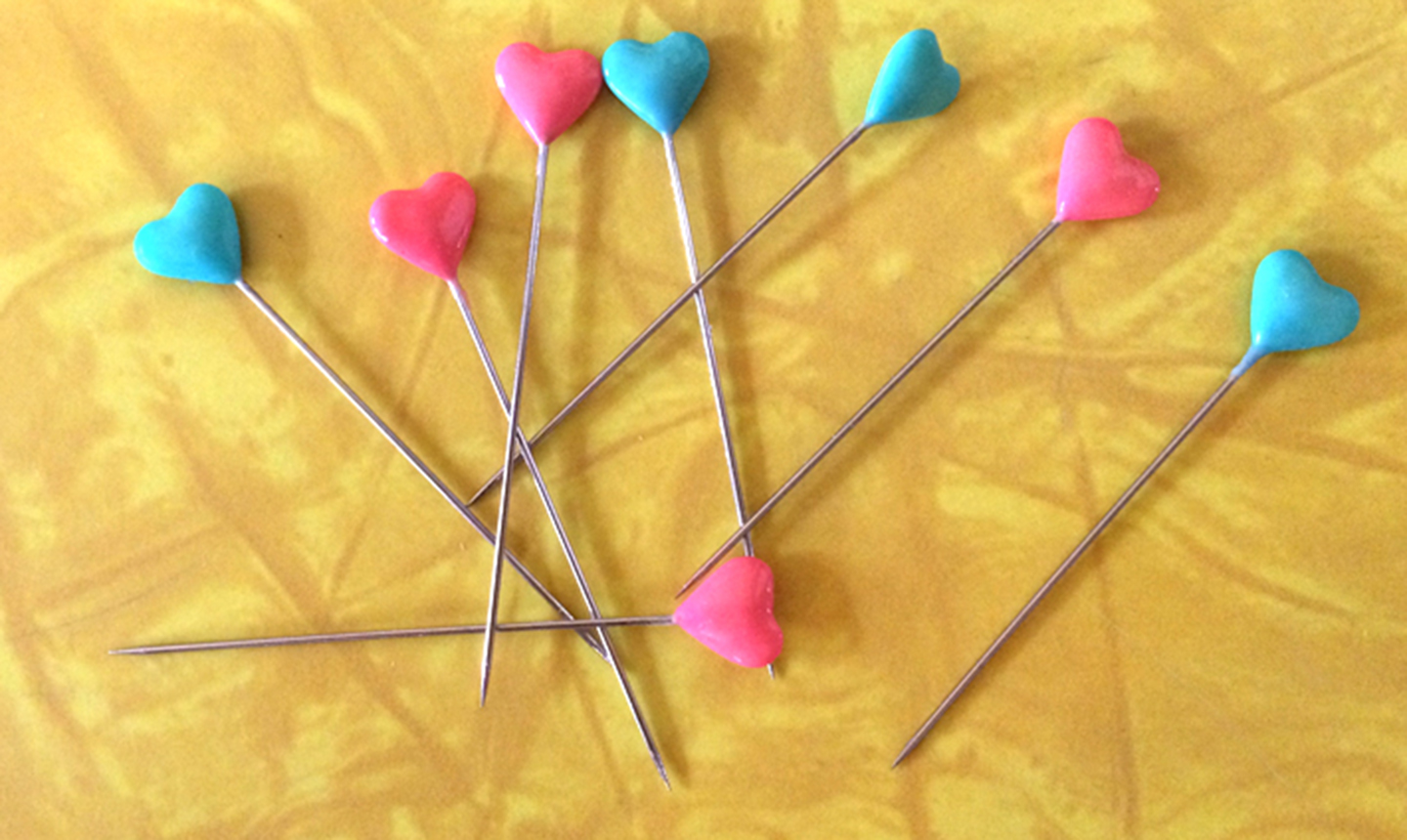
If you’re making craft projects with a material like felt, you may want plastic head craft pins. Usually they have big multi-colored plastic ends, sometimes in novelty shapes like hearts and flowers. They don’t have to be super high-quality (meaning you don’t have to spend a lot of money on them), and they’re a nice addition to round out your pin stash.
6. T-Pins
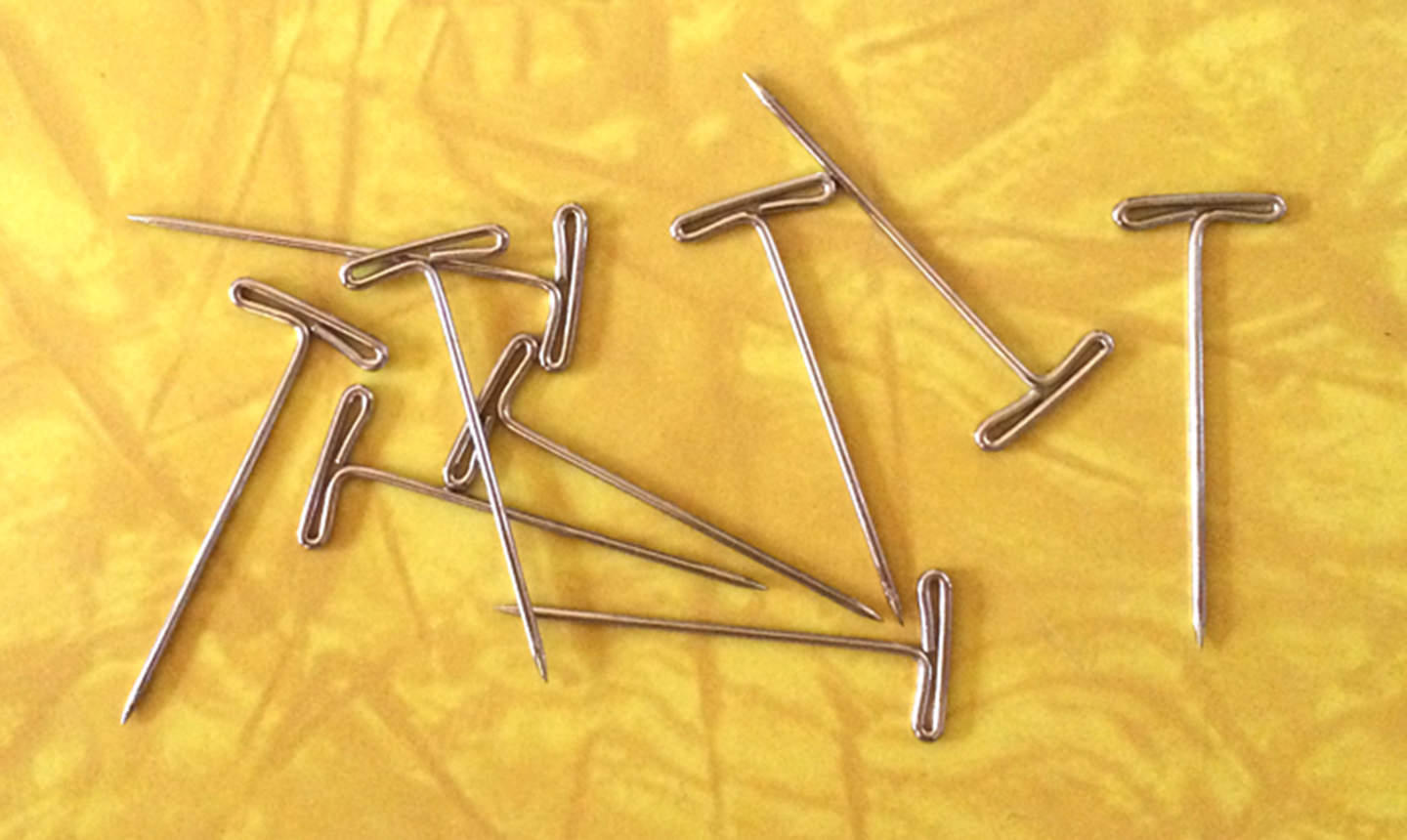
T-pins, which are 1½” long and made entirely of nickel-plated steel, are good for holding down upholstery fabrics or for those rare craft projects that do require pressing with an iron. You may not need them often for sewing, but when the occasion calls for it, little else will do!
what pins do I use for stretch fabric. I want long ball point pins not to tear stretch jersey cotton. cannot find anywhere. preferably with colour round heads. help
Out of a mix of common pins, some very, very old, I found a few to be nonmagnetic. I wonder if they are brass.
What is the best straight pens to buy for Polyester fabric
I'm looking for the best pins to use for knitted chunky sweaters! Safety pins are great to notice easily but often get caught up in the yarn and difficult to remove which is a nightmare! Then I tried ordinary pins with coloured round heads but they practically disappeared amongst the yarn which made me feel nervous, so no good either! I'm frustrated and annoyed, please help!
I am looking for a flexible, long straight pin to use through layers of fabric. Can you suggest anything?
Hello what I’m looking for is a a single headed pin with 2 parallel pins for sewing. They are extremely useful for pending Slaves which as you know have a tendency to bunch up if they are gathered at the top. I cannot remember the maker or the lady that I bought them from online. But I’m running out of the minutes driving me crazy. I can send you a picture. But if you know where I can buy them or you sell them please let me know! Thank you so much.
What do ballpoint pins do compared to needles?
“Sewist”? Dressmaker or tailor, “bendy”? Bendable or bends easily. Suggest a proofreader.